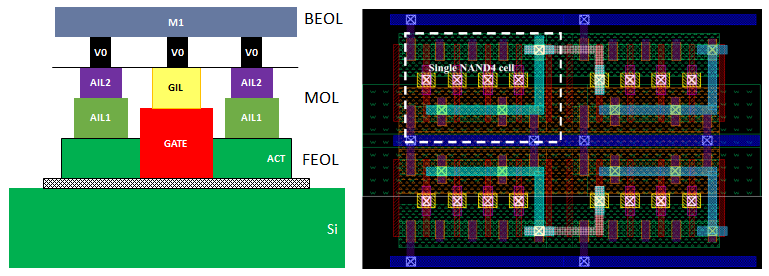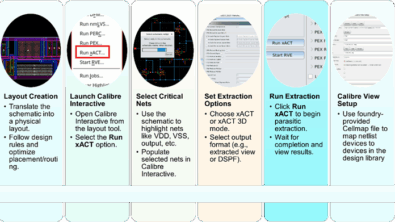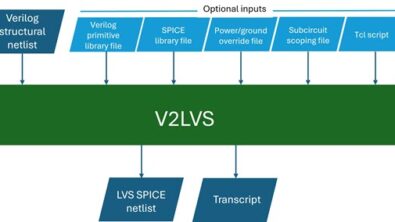Free Is a Good Price, Especially for Process Design Kits
By Joseph Davis, Mentor Graphics
The freePDK15 and its associated 15 nm Open Cell Library are now available!
Let’s say that you are a PhD student working on an efficient algorithm to ensure stable triple patterning for a future technology node.
You know the math, and you know the algorithms, but you need to apply these within the scope of the realistic constraints of a technology process to know if it might actually be useful.
There are commercial production services, but you don’t need to manufacture something to prove the algorithm (and you can’t afford it, either). Where do you get the information you need?
Or maybe you’re an EDA company. You have a wide variety of real-life test cases from customers and vendors, but you need a demonstration vehicle that you can give to all your customers for demos, training, and documentation.
Of course, you can’t use those customer test cases with anyone other than that customer, and your favorite foundry isn’t really interested in allowing you to republish their proprietary process information as part of your training.
Back in 2007, a group of researchers from North Carolina State University, Oklahoma State University, and Arizona State University did something about this problem.
They put together an open, free-for-use process design kit (PDK) for a virtual 45 nm technology. The PDK is the key enabler for design-related experiments and demonstrations, because it defines the physical and electrical properties of the technology. It contains such things as the SPICE models (which define the properties of the transistors and passives), the layer definitions, physical design rules, layout-vs-schematic rules, parasitic definitions, and basic P-Cells (parameterized cells that can be programmatically scaled).
All of these things are required to create a layout of a circuit and simulate it as you would for a production circuit that you would send to a manufacturing facility.
Do not underestimate the work required to create a completely public and unencumbered PDK.
These researchers couldn’t just use their experience with production processes to create an “average” technology that represented the known 45 nm processes. To be completely public, every part of the PDK had to be sourced from a public presentation or publication.
As you might know, the name of a technology no longer represents any single part of the process, so even the most basic elements of the PDK require substantial research to obtain in this manner.
For instance, many papers and articles talk about how difficult it is to do double patterning, but how many give sufficient specifics of the geometries involved to enable you to derive an actual design rule? It is a massive task to sieve through the literature, piece together bits and pieces from different publications from different manufacturers, and eliminate all of the inconsistencies.
Once the freePDK45 was available, Nangate (an EDA company that provides library optimization tools and services) used it to create a full library of standard cells and the EDA “views” for those libraries.
With this library and the PDK itself, researchers and EDA companies could finally create designs in this virtual 45 nm technology to test and demonstrate their best ideas…and they did so. At last count, there were over 200 published citations for the freePDK45 and over 1000 for the associated Nangate 45nm Open Cell Library. If it were a scholarly paper, 200 citations would be astronomical. As a contribution to the industry, it is invaluable.
Process Design Kit for 15nm technology
Now, NCSU professor Dr. Rhett Davis and his students have made the investment again, this time moving the PDK forward to the 15 nm technology with the freePDK15 (Figure 1). 15 nm is a sufficiently current technology to be relevant for both researchers and EDA vendors. Nangate has also re-invested and created a new library for the freePDK15.
Figure 1. The FreePDK15 enables universities and EDA companies to perform the necessary research to develop new techniques and tools for leading-edge processes without the need for proprietary information.
NCSU distributes the freePDK15, and Nangate distributes the 15 nm Open Cell Library. The freePDK15 is completely free for educational purposes, such as university research, as well as demos and test cases for companies.
If you are going to generate revenue from it somehow, though, you will need a license from the NCSU Technology transfer office. Nangate has a similar, but slightly different, usage model. Check out their respective websites for the details.
Since technology providers control process information about leading-edge technologies such as 15 nm much more closely than they did in the past, I’m sure that this new PDK and library will see even more adoption and usage than its predecessor did in 2007. Thanks, guys!
Author
Joe Davis is Mentor’s Director of Product Marketing for Calibre interactive and integration products.
This article was originally published on www.eetimes.com






